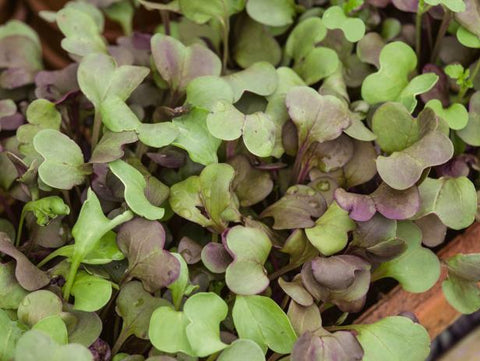Plants, much like humans, require a balanced diet to thrive. Nutrients such as nitrogen, phosphorus, potassium, calcium, and magnesium are essential for their growth, development, and overall health. However, when these nutrients become deficient in the soil, plants can exhibit a range of symptoms that hinder their productivity and vitality. In this article, we'll delve into the top 5 nutrient deficiencies in plants, explore their symptoms and causes, and discuss effective solutions for remedying them. The following content also has some reference value for raised garden beds.

Nitrogen Deficiency
Symptoms of nitrogen deficiency in plants
When nitrogen levels are insufficient, plants often display distinct symptoms. These include stunted growth, pale or yellowing leaves (particularly at the base of the plant), and diminished overall vigor. Additionally, the foliage may appear thin and spindly, with reduced leaf size and chlorosis (yellowing) progressing from the tips to the base.
Causes of nitrogen deficiency
Several factors can contribute to nitrogen deficiency in plants. Poor soil fertility, excessive leaching due to heavy rainfall or over-irrigation, and nitrogen-fixing crop depletion are common culprits. Additionally, nitrogen loss through volatilization or denitrification can occur in soils with inadequate organic matter or improper fertilization practices.
How to fix nitrogen deficiency in plants
1. Using nitrogen-rich fertilizers: Applying fertilizers containing nitrogen, such as urea or ammonium nitrate, can quickly replenish nitrogen levels in the soil and stimulate plant growth. However, it's essential to follow recommended application rates to avoid over-fertilization and environmental contamination.
2. Amending soil with organic matter: Incorporating organic materials like compost, manure, or green manure cover crops can gradually increase soil nitrogen levels. These organic amendments not only provide a sustainable source of nitrogen but also improve soil structure and microbial activity.
3. Crop rotation and cover cropping: Rotating nitrogen-demanding crops with legumes, which can fix atmospheric nitrogen through symbiotic relationships with nitrogen-fixing bacteria, can help restore nitrogen balance in the soil. Additionally, planting cover crops like clover or vetch during fallow periods can prevent nitrogen leaching and improve soil fertility over time.
Phosphorus Deficiency
Symptoms of phosphorus deficiency in plants
Phosphorus deficiency often manifests as stunted growth, weak root development, and dark green or purplish discoloration of leaves. Plants may also exhibit delayed flowering and fruiting, as phosphorus is essential for energy transfer and reproductive processes.
Causes of phosphorus deficiency
Phosphorus deficiency can arise from various factors, including acidic or alkaline soil conditions that inhibit phosphorus availability, excessive phosphorus fixation in clay soils, and insufficient phosphorus application or uptake due to poor root health or environmental stress.
How to fix phosphorus deficiency in plants
1. Applying phosphorus-rich fertilizers: Fertilizers containing phosphorus, such as superphosphate or bone meal, can effectively supplement soil phosphorus levels and promote healthy plant growth. Broadcasting or banding these fertilizers near the root zone ensures optimal phosphorus uptake by plants.
2. Adjusting soil pH: Maintaining soil pH within the optimal range (pH 6-7) enhances phosphorus availability, as extremes in pH can hinder phosphorus solubility and uptake. Adding lime to acidic soils or elemental sulfur to alkaline soils can help correct pH imbalances and improve phosphorus absorption by plants.
3. Enhancing phosphorus availability through microbial inoculants: Introducing beneficial soil microbes, such as mycorrhizal fungi or phosphate-solubilizing bacteria, can increase phosphorus availability to plants by enhancing nutrient cycling and root exploration. These microbial inoculants establish symbiotic relationships with plant roots, facilitating phosphorus uptake and utilization in nutrient-deficient soils.

Potassium Deficiency
Symptoms of potassium deficiency in plants
Potassium deficiency is characterized by yellowing or browning leaf margins, necrosis (death) of leaf tissue, and weak, floppy stems. Plants may also exhibit reduced drought tolerance and susceptibility to pests and diseases due to impaired water regulation and nutrient transport.
Causes of potassium deficiency
Potassium deficiency can result from various factors, including sandy soils with low potassium retention capacity, excessive rainfall or irrigation leading to potassium leaching, and imbalanced nutrient ratios that interfere with potassium uptake by plant roots.
How to fix potassium deficiency in plants
1. Adding potassium sulfate or potassium chloride: Applying potassium-containing fertilizers can effectively replenish soil potassium levels and correct deficiency symptoms in plants. Potassium sulfate and potassium chloride are commonly used fertilizers that provide readily available potassium for plant uptake.
2. Improving soil drainage: Enhancing soil drainage through proper irrigation management, contouring, or installing drainage systems can reduce waterlogging and minimize potassium leaching from the root zone. Well-drained soils ensure efficient potassium retention and uptake by plant roots, promoting optimal growth and development.
3. Mulching to conserve soil moisture and nutrients: Mulching around plants with organic materials like straw, wood chips, or compost helps conserve soil moisture and nutrients, including potassium. Mulches also regulate soil temperature, suppress weed growth, and enhance microbial activity, creating a favorable environment for healthy plant growth and potassium uptake.
Calcium Deficiency
Symptoms of calcium deficiency in plants
Calcium deficiency often manifests as distorted leaf growth, necrosis of young leaves or shoot tips, and blossom end rot in fruits like tomatoes and peppers. Plants may also exhibit weak stems and increased susceptibility to physiological disorders due to impaired cell wall formation and membrane integrity.
Causes of calcium deficiency
Calcium deficiency can occur in acidic soils with low calcium availability, high magnesium or potassium levels that interfere with calcium uptake, and excessive ammonium nitrogen fertilization that disrupts calcium transport within plants.
How to fix calcium deficiency in plants
1. Applying calcium-containing fertilizers: Fertilizers such as gypsum (calcium sulfate) or calcium carbonate can effectively supplement soil calcium levels and alleviate deficiency symptoms in plants. Broadcasting these fertilizers or incorporating them into the soil during planting ensures uniform calcium distribution and availability to plant roots.
2. Adjusting soil pH and calcium-magnesium balance: Maintaining soil pH within the optimal range (pH 6.5-7.5) promotes calcium availability and uptake by plants. Additionally, balancing calcium and magnesium ratios in the soil prevents competitive interactions between these nutrients and ensures proper calcium absorption by plant roots.
3. Using gypsum as a soil amendment: Incorporating gypsum into the soil helps improve soil structure, enhance water infiltration and drainage, and increase calcium availability to plants. Gypsum also mitigates soil salinity and aluminum toxicity, creating a conducive environment for healthy root growth and calcium assimilation.
Magnesium Deficiency
Symptoms of magnesium deficiency in plants
Magnesium deficiency is characterized by interveinal chlorosis (yellowing between leaf veins), leaf curling or cupping, and reduced photosynthetic activity. Plants may also exhibit poor fruit or seed sets and increased susceptibility to environmental stressors due to impaired chlorophyll synthesis and energy metabolism.
Causes of magnesium deficiency
Magnesium deficiency can result from various factors, including acidic or sandy soils with low magnesium availability, excessive potassium fertilization that induces magnesium uptake competition, and high levels of calcium or manganese that antagonize magnesium absorption by plant roots.
How to fix magnesium deficiency in plants
1. Applying magnesium-containing fertilizers: Fertilizers like Epsom salts (magnesium sulfate) or dolomitic lime (containing magnesium carbonate) can effectively supplement soil magnesium levels and alleviate deficiency symptoms in plants. Broadcasting these fertilizers or incorporating them into the soil ensures uniform magnesium distribution and uptake by plant roots.
2. Using Epsom salts as a quick remedy: Dissolving Epsom salts in water and applying them as a foliar spray or soil drench provides a rapid solution to magnesium deficiency in plants. The foliar application allows direct absorption of magnesium through leaf stomata, bypassing potential soil uptake limitations and accelerating symptom relief.
3. Avoiding excessive potassium fertilization: Balancing potassium and magnesium levels in the soil prevents competitive interactions between these nutrients and ensures adequate magnesium uptake by plant roots. Avoiding excessive potassium fertilization or using potassium-magnesium-balanced fertilizers helps maintain optimal nutrient ratios and promotes healthy plant growth and development.

Conclusion
In conclusion, nutrient deficiencies pose significant challenges to plant health and productivity, affecting their growth, development, and overall performance. By recognizing the symptoms, causes, and solutions for the top 5 nutrient deficiencies in plants—nitrogen, phosphorus, potassium, calcium, and magnesium—gardeners, and farmers can take proactive measures to optimize soil fertility and promote vigorous plant growth. Whether through soil amendments, fertilization practices, or cultural management strategies, addressing nutrient deficiencies is essential for cultivating thriving gardens, farms, and landscapes. So, let's nurture our plants with the nutrients they need to flourish and thrive, ensuring bountiful harvests and beautiful landscapes for generations to come.









